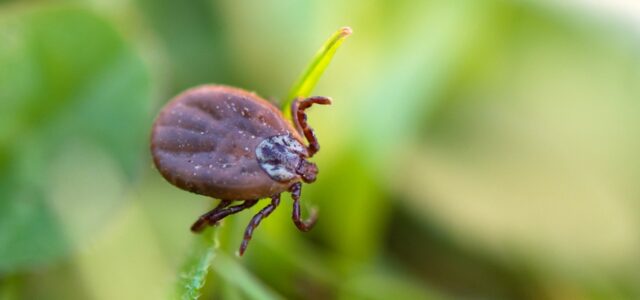Call for your appointment today 914-666-4665 | Mt. Kisco, New York

So far, research has focused on questing behavior primarily in the laboratory. “Ticks must balance the need to quest for blood meal hosts with the risk of desiccation, all on a fixed energy budget,” writes Thomas from Washington State University. ¹
But Thomas and his team wanted to investigate questing patterns in a natural habitat. “We measured questing activity of nymphs and larvae throughout the day and night and over several weeks in enclosures across a range of suitable tick habitats within a site in the Northeast,” he writes.
[bctt tweet=”A new study finds some ticks quest most of the time, regardless of weather conditions or time of day. ” username=”DrDanielCameron”]
They found that the activity of nymphs increased slightly during dawn and dusk, the opposite of larvae. But their findings could not be replicated at other sites. Questing behavior was also not impacted by temperature, relative humidity, light-dark cycles and energy reserves.
“Rather it appears a fraction of ticks were questing most of the time, regardless of conditions,” he writes. “Our study suggests neither climatic conditions or light-dark cycles have appreciable influence on tick questing behavior.”
Related Articles:
Ticks can survive a northern winter but can ticks survive a southern summer
References:
- Thomas CE, Burton ES, Brunner JL. Environmental Drivers of Questing Activity of Juvenile Black-Legged Ticks (Acari: Ixodidae): Temperature, Desiccation Risk, and Diel Cycles. J Med Entomol. 2019.




It would appear from the complexity of treating Lyme Infected patients, that prevention education would help to stem the epidemic affecting some 700,000 victims, each year in the United States. How is it that the education is so lacking. The corona virus is receiving huge attention from the President Of the United States, but little news bulletins on the upcoming tick attack season.
Any time it is above freezing temperatures. The reports are based upon when folks show up in the emergency room, or when doctors report the case. Only ten percent of doctors report. Most reported cases were evidence of tick bites 30-60 days before the arrival at the medical Office. That growth in statistics has a lot to do with human activity out of doors , more than the activities of questing ticks. No people, No bites. Properly educated and protected outdoor activity is not reported either. No Bite, No Sick.